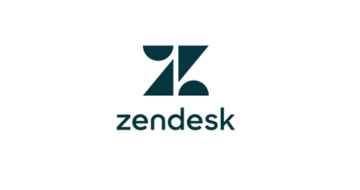
| Starting price | $25/mo |
|---|---|
| Pricing model | Per Agent |
| Free Trial | Yes |
| Free Version | Yes |
Finding the perfect live chat software for your business can be overwhelming. Our team has carefully reviewed numerous options to provide you with the most reliable and efficient solutions.

| Starting price | $25/mo |
|---|---|
| Pricing model | Per Agent |
| Free Trial | Yes |
| Free Version | Yes |
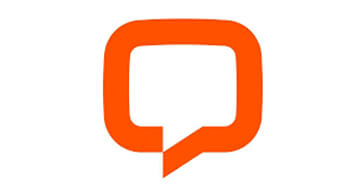
| Starting price | $19/mo |
|---|---|
| Pricing model | Per User |
| Free Trial | 14-day |
| Free Version | No |

| Starting price | Free |
|---|---|
| Pricing model | Free |
| Free Trial | No |
| Free Version | Yes |
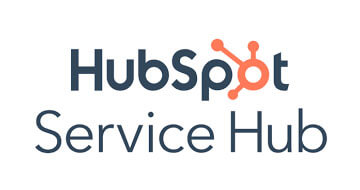
| Starting price | $50/mo |
|---|---|
| Pricing model | Subscriber based |
| Free Trial | 14-day |
| Free Version | No |
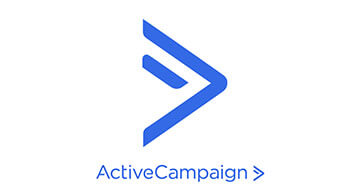
| Starting Price | $11/mo |
|---|---|
| Pricing Model | Per User |
| Free Trial | 14-day |
| Free Version | No |
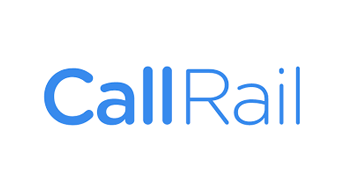
| Starting Price | $45/mo. |
|---|---|
| Pricing Model | Subscriber based |
| Free Trial | Yes |
| Free Version | No |

| Starting price | $18/mo |
|---|---|
| Pricing model | Per User |
| Free Trial | 15-day |
| Free Version | Yes |

| Starting price | $37.49/mo |
|---|---|
| Pricing model | Per Seat |
| Free Trial | 14-days |
| Free Version | Free (personal use) |
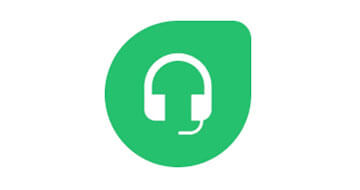
| Starting price | $18/mo |
|---|---|
| Pricing model | Per User |
| Free Trial | 21-day |
| Free Version | Yes |
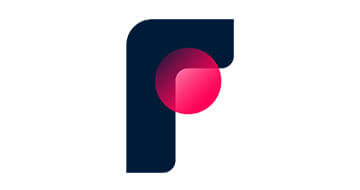
| Starting price | $19/mo |
|---|---|
| Pricing model | Per User |
| Free Trial | Yes (upon request) |
| Free Version | No |

| Starting Price | $50/month |
|---|---|
| Pricing Model | Subscriber based |
| Free Trial | Yes |
| Free Version | Yes |

| Starting price | $189/mo |
|---|---|
| Pricing model | Flat-rate and quotation based |
| Free Trial | No |
| Free Version | No |
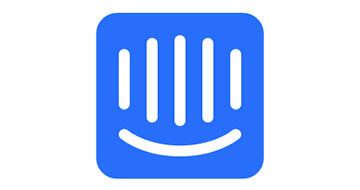
| Starting price | $67/mo |
|---|---|
| Pricing model | Per Seat |
| Free Trial | 14-days |
| Free Version | No |
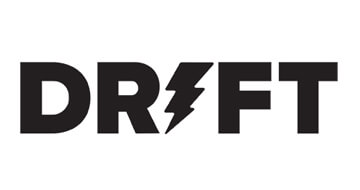
| Starting price | Quote only |
|---|---|
| Pricing model | Quotation based |
| Free Trial | No |
| Free Version | Yes |
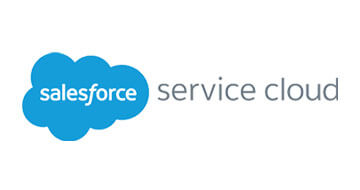
| Starting price | $25/mo |
|---|---|
| Pricing model | Per User |
| Free Trial | 30 days |
| Free Version | No |

| Starting price | $15/mo |
|---|---|
| Pricing model | Subscriber based |
| Free Trial | No |
| Free Version | Yes |
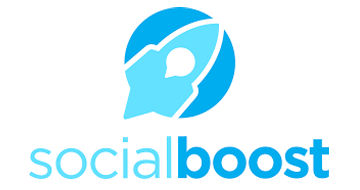
| Starting Price | $29/month |
|---|---|
| Pricing Model | Subscriber based |
| Free Trial | Yes (Free Demo Only) |
| Free Version | No |
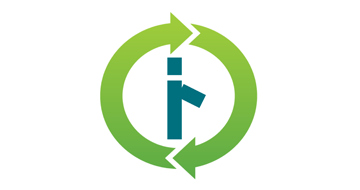
| Starting Price | $9/month (billed annually) |
|---|---|
| Pricing Model | Per Queries |
| Free Trial | Yes |
| Free Version | No |
Live chat software is a customer service solution that allows you to respond in real-time to your clients. Not only does it impart information quickly to people visiting your site, but it also creates lasting impacts on your business performance. Having a live support tool helps you capture leads and convert them immediately.
The best thing about live chat is that it enables customers to get all the information they need right away. Your staff can respond with detailed answers, building trust and rapport with potential clients. It increases website engagement and garners your site a strong reputation, especially when you respond to every query promptly.
For example, if you’re selling items in a shop, customers benefit hugely from asking questions about your products. Even if you provide all the information, it may not be easily accessible or a customer may find it confusing. Having a live chat option enables users to get support when uncertain about shipping destinations, costs, or product specifications. By only having a slower customer response system such as email, you risk losing potential clients who don’t want to wait for answers.
Live chat apps have a wide array of very similar features, though these can differ across software options. For the most part, website chat solutions will have these features in common:
Canned responses: Pre-set responses to commonly asked questions reduce the time someone needs to be online. These standard replies help reduce response time significantly.
Chat routing: Provides the option to prioritize certain chats and send queries to the right department for a better customer experience.
Customization: Make your live chat fit your brand. Enable emoticons for a friendlier experience, add chat widgets, provide customized greetings, include your logo, and more.
Real-time visitor monitoring: Monitor visitor behavior in real-time. Get insights on when to reach out to customers, understand traffic patterns, and identify where the most engagement occurs on your site.
We use a comprehensive rating methodology to provide unbiased insights. Our rating accounts for pricing, ease of use, features, and support. We introduce the Genius Score, a unique rating system ranging from 0 to 100 based on external reviews and internal testing. For a deeper understanding, check out our full rating methodology.
Selecting the right live chat software requires careful evaluation of your specific business needs. Here’s what you should consider:
Small businesses need affordable, easy-to-implement solutions with straightforward features. Mid-sized companies require robust automation and team management capabilities. Enterprise organizations need advanced integrations, comprehensive analytics, and dedicated support.
Your live chat software should seamlessly connect with your existing technology stack. Look for integrations with:
Live chat pricing varies significantly. Starter options generally begin around $15-20 per agent per month, while advanced business solutions can reach $50+ per month. Consider total cost of ownership, including setup fees, per-agent costs, and premium feature add-ons.
Data protection is paramount. Ensure your chosen software complies with regulations like GDPR, CCPA, and industry-specific standards. Look for end-to-end encryption, secure data storage, and regular security audits.
Both agent experience and customer experience matter. The software should be intuitive for your team to use and provide a seamless, professional experience for your customers. Test the interface during trial periods to ensure it meets your standards.
| Software | Best For | Starting Price | Key Strengths | Free Trial |
|---|---|---|---|---|
| LiveChat | Growing businesses | $20/agent/month | Comprehensive features, excellent mobile app, strong e-commerce focus | 14 days |
| Zendesk Chat | Enterprise support teams | $55/agent/month | Omnichannel integration, AI capabilities, unified workspace | 14 days |
| Olark | Small to mid-size teams | $29/seat/month | Simple setup, affordable pricing, good reporting | 14 days |
| Intercom | SaaS companies | $39/seat/month | Product tours, targeted messaging, customer engagement focus | 14 days |
| Freshchat | Customer support teams | $15/agent/month | Part of Freshworks suite, good UI, detailed contact info | 21 days |
| Tidio | E-commerce stores | $19/operator/month | AI chatbots included, Shopify integration, visual automation builder | 7 days |
Each live chat app offers different features and services. This includes available reports, automation levels, customization options, and more. Here are important features you should carefully consider before choosing your website chat software.
Top software gives you the option to add chat forms, which speeds up information gathering. Pre-chat forms help you understand exactly what the issue is before the conversation starts. Offline message forms keep clients engaged even when you’re not operating. Post-chat forms give customers the chance to provide feedback that helps improve future interactions.
Good live chat software provides comprehensive reports. Track individual agent performance and calculate overall ratings on your site. Monitor completed chats, missed chats, average response times from your operators, customer satisfaction scores, and much more. These insights drive continuous improvement.
Most website chat apps should have additional plugins allowing you to add a chatbot. While these can be annoying when poorly implemented, they bridge the gap and are preferable to leaving a client without any support at all. The chatbot should only respond to the most Frequently Asked Questions, with a real person taking over for complex inquiries.
It’s very important to make sure the live chat service has a mobile app option. This allows you to keep in contact with your clients and customers no matter what device they’re using. Mobile responsiveness ensures both agents and customers can communicate seamlessly on smartphones and tablets.
For large companies, multiple integrations are a must. Consider what integration options and platforms are available. Check whether the app offers CRM, help desk, analytics, email marketing, and other crucial integrations.
The live chat solution should also be very easy to use and install. Long setup times should be avoided as they indicate the software is complex to teach and use down the line — everything needs to be easy and efficient from both sides.
Modern live chat software goes beyond basic messaging. Here are advanced capabilities that can transform your customer service:
Artificial intelligence enhances live chat through smart routing, sentiment analysis, and predictive responses. AI can analyze conversation patterns to suggest responses, identify urgent issues, and even predict customer needs before they’re explicitly stated.
Co-browsing allows agents to see exactly what the customer sees on their screen. This feature is invaluable for troubleshooting technical issues, guiding customers through complex processes, or helping with checkout problems.
Some advanced live chat solutions offer seamless video chat transitions. When text chat isn’t sufficient, agents can initiate video calls for face-to-face support, creating a more personal connection.
Smart triggers can initiate conversations based on user behavior. For example, if a customer spends extended time on a pricing page or repeatedly visits without purchasing, the system can automatically offer assistance.
For global businesses, automatic translation features break down language barriers. Customers can chat in their preferred language while agents respond in theirs, with real-time translation happening seamlessly.
There are numerous benefits to using live chat tools. The type of live chat options and how you use them will depend on your company or business. For instance, larger companies will focus on multiple integrations offered, whereas smaller companies may prioritize customization options to create a recognizable brand.
This is probably the number one reason to get and use live chat software on your website. Customers will always have questions about your products. Having someone on hand with the ability to answer these questions instantly is a major plus point for any potential buyer. They remain on your website throughout the entire exchange, gaining a positive response to your site. The operator can help them overcome any doubts, resulting in a sale. Studies show that customers are 35% more likely to purchase online after chatting via live chat.
Traditional call centers have been the long-standing method to allow customers to get in touch with a business, but live chat is taking over. Not only is it more efficient, but cheaper too. A single live operator can handle six chats simultaneously, thus managing more issues in a given time period. This efficiency dramatically reduces per-interaction costs compared to phone support.
In-store shopping enables customers to trust a brand and build rapport with sales representatives. This is harder online unless you have live chat. This software bridges that gap and engenders trust between you and your customers, making them more likely to buy and return. Real-time communication humanizes your brand in the digital space.
Live chat services don’t just mean you gain sales — the value of each sale increases too. When you use live chat options and show you understand the client, you’ve won half the battle. By talking with the client, you can expand their purchase options, encouraging them to buy related products alongside the original one.
All the above points funnel down to customer satisfaction. With attentive live chat operators, your customer’s experience improves significantly. They will likely recommend you, rate you well, and come back for future purchases. High satisfaction scores translate directly to customer retention and lifetime value.
E-commerce and online retail: Improve customer support, increase conversion rates, and guide customers through the buying process. Answer product questions instantly and reduce cart abandonment.
Customer care and service teams: Streamline interactions, resolve issues efficiently, and increase customer satisfaction. Handle multiple conversations simultaneously to improve team productivity.
SaaS companies and startups: Engage with potential customers, offer live demos, and facilitate onboarding. Provide immediate support during critical adoption phases.
Real estate and property management: Provide instant property information, schedule appointments, and respond to customer inquiries promptly. Capture leads when interest is highest.
Education and e-learning platforms: Support students, answer questions, and provide real-time guidance. Improve student success rates through accessible support.
Healthcare providers: Answer patient inquiries, schedule appointments, and provide basic information while maintaining HIPAA compliance through secure chat systems.
Financial services: Offer secure, compliant customer support for banking and investment questions. Provide immediate assistance during critical decision-making moments.
Understanding different pricing structures helps you choose the most cost-effective solution for your needs:
Pay a fixed monthly fee for each operator using the live chat software. This straightforward model works well for businesses with a predictable number of support agents. Most solutions charge between $15-50 per agent monthly.
Similar to per-agent, but may include additional users who have access to live chat features without actively handling conversations, such as supervisors or managers.
Choose from plans with varying features at different price points. Basic tiers typically start around $15-20/month and include essential features. Professional tiers ($30-50/month) add advanced automation and analytics. Enterprise plans (custom pricing) provide dedicated support and unlimited customization.
Costs depend on the number of chats or conversations handled. This flexible model benefits businesses with fluctuating support volumes, allowing you to pay only for what you use.
Pay a fixed monthly fee for unlimited usage. This model is less common but can be cost-effective for high-volume businesses. Some platforms like Tawk.to offer completely free plans supported by optional paid add-ons.
There is wide variety in the cost of a good live chat app. For starter options, pricing generally begins around $15-20 per month per agent, though you can get package deals through a website host software provider too. The cost increases with the number of features required, the size of the business, and the number of operators necessary to use the system. Higher-end business options for live chat apps come in at around $50-80 per month or even more.
| Price Range | What You Get | Best For |
|---|---|---|
| Free – $15/agent/month | Basic live chat, limited customization, essential features, email support | Startups, very small businesses, testing the concept |
| $15-30/agent/month | Standard features, chat routing, canned responses, basic reporting, chat support | Small businesses, growing teams |
| $30-50/agent/month | Advanced automation, detailed analytics, integrations, priority support, AI features | Mid-sized businesses, established teams |
| $50+/agent/month | Enterprise features, dedicated support, unlimited customization, advanced security, SLA guarantees | Large enterprises, complex requirements |
There are a couple of different live chat types available. The option you choose will partially depend on your budget and the needs you have for the service. For example, you may need the service on your own infrastructure so that you have complete access to the software all the time.
This is the more popular option for website chat software. By having the software based in the cloud, you can enjoy regular automated updates. Cloud-based live chat also enables a more flexible payment plan, with companies only paying for what they use. It avoids infrastructure investments as these products run on third-party servers. By default, this reduces big security issues too, as those third-party servers handle security management.
Advantages: Lower upfront costs, automatic updates, accessible from anywhere, scalable, professional security management.
Considerations: Ongoing subscription costs, dependent on internet connectivity, less control over data location.
A self-hosted website chat solution works on the organization’s own infrastructure. The company pays for the infrastructure and maintains complete control over the software and data. However, this means there isn’t anytime access from anywhere without proper VPN setup. This can be a major drawback when operating efficiently around the clock. Additionally, this type of live chat option can mean reduced security unless you have dedicated IT security staff.
Advantages: Complete data control, no recurring subscription fees after initial setup, customizable to exact specifications, no dependency on external providers.
Considerations: Higher upfront costs, requires technical expertise, responsibility for security and updates, limited scalability.
The power of live chat multiplies when it integrates seamlessly with your existing tools. Here’s what to look for:
Connect your live chat to your CRM system to automatically sync conversation history, customer information, and interaction data. This provides agents with complete context before they even start a conversation. Popular CRM integrations include Salesforce, HubSpot, Zoho, and Pipedrive.
For online retailers, integration with Shopify, WooCommerce, Magento, or BigCommerce allows agents to view customer purchase history, current cart contents, and browsing behavior. This context enables personalized product recommendations and resolves issues faster.
Connect live chat with helpdesk software like Freshdesk to automatically create tickets from unresolved chats. This ensures nothing falls through the cracks and provides a complete support history in one place.
Sync with email marketing platforms like Klaviyo or Omnisend to segment customers based on chat interactions and trigger targeted follow-up campaigns. Turn support conversations into marketing opportunities.
Connect with Google Analytics, Mixpanel, or other analytics platforms to understand how live chat impacts broader business metrics like conversion rates, time on site, and customer lifetime value.
Some advanced solutions integrate with Slack, Microsoft Teams, or other internal communication tools, allowing your team to collaborate on complex customer issues without leaving their preferred workspace.
Security should be a top priority when choosing live chat software, especially if you handle sensitive customer information.
Look for solutions that offer end-to-end encryption for all conversations. Data should be encrypted both in transit and at rest to prevent unauthorized access.
Depending on your industry and location, you may need to comply with specific regulations:
Understand the software provider’s data retention policies. How long are chat transcripts stored? Where are they stored? Can customers request deletion of their data? Ensure policies align with your privacy commitments and legal requirements.
Implement role-based access controls to ensure team members only see the data they need. Look for features like two-factor authentication and single sign-on (SSO) for additional security layers.
Successfully implementing live chat software requires more than just installing a widget on your website. Follow these best practices:
Don’t overwhelm visitors by placing chat widgets on every page. Start with high-impact pages like pricing, checkout, product pages, and support sections. Monitor which placements generate the most valuable conversations.
If you can’t offer 24/7 coverage, clearly communicate your chat availability hours. Use offline forms to capture messages when your team isn’t available, and set expectations for response times.
Invest time in training your support team on the software’s features, your brand voice, and best practices for written communication. Good training directly impacts customer satisfaction.
Build a library of pre-written responses to common questions. This speeds up response times while maintaining consistency in your messaging. Update these regularly based on new products or policies.
Regularly review chat transcripts, customer satisfaction scores, and agent performance metrics. Identify common issues, training opportunities, and areas for process improvement.
Begin with a small team of trained agents, then gradually expand as you refine processes and identify what works. This controlled approach prevents overwhelming your team or providing poor customer experiences.
Understanding potential pitfalls helps you avoid them:
Solution: Implement chatbots to handle basic FAQs, use intelligent routing to distribute chats evenly, and set maximum chat limits per agent. Consider hiring additional support staff during peak times.
Solution: Use canned responses for common questions, implement a knowledge base agents can quickly reference, and ensure adequate staffing during busy periods. Monitor average response times and set team goals.
Solution: Develop clear guidelines for tone and communication style, create comprehensive canned response libraries, and conduct regular training sessions. Review chat transcripts to identify inconsistencies.
Solution: Make the chat widget more visible, use proactive chat triggers on key pages, advertise your chat service through other channels, and ensure your availability hours match customer needs.
Solution: Choose software with pre-built integrations for your existing tools, work with implementation specialists if needed, and thoroughly test integrations before going live.
The live chat landscape continues evolving. Here are trends shaping the future:
Advanced AI capabilities will increasingly handle routine inquiries independently, freeing human agents for complex issues. Sentiment analysis will help prioritize conversations and alert supervisors to escalating situations.
Customers expect seamless experiences across channels. Live chat solutions are merging with SMS, social media messaging, voice systems like CloudTalk, and email to create unified communication platforms.
As bandwidth improves and video becomes ubiquitous, expect more live chat solutions to offer seamless video chat capabilities for complex support issues or high-value sales conversations.
Machine learning will predict customer needs based on browsing behavior, purchase history, and past interactions, allowing proactive support before customers even realize they need help.
With mobile traffic dominating, live chat solutions are prioritizing mobile-first design, ensuring excellent experiences on smartphones and tablets for both customers and agents.
Track these metrics to evaluate your live chat performance:
Measure how quickly agents respond to incoming chats. Industry standard is under 30 seconds for the first response. Faster response times correlate strongly with customer satisfaction.
Track how long it takes to fully resolve customer issues. Balance speed with quality — rushed resolutions may lead to repeat contacts.
Use post-chat surveys to measure customer satisfaction. Aim for scores above 90%. Low scores indicate training needs or process issues.
Measure what percentage of issues are resolved in a single conversation. Higher rates indicate efficient support and knowledgeable agents.
Monitor chat volume by time of day, day of week, and season. This helps with staffing decisions and identifying busy periods.
For sales-focused chats, track what percentage of conversations result in purchases. This demonstrates ROI and helps justify investment in live chat resources.
Measure how many chats each agent handles and their idle time. This helps optimize staffing levels and identify training opportunities.
Live chat software has evolved from a nice-to-have feature to an essential customer service channel. The right solution depends on your specific needs, budget, and business goals.
Start by clearly defining your requirements: What problems are you trying to solve? What’s your budget? What integrations do you need? How many agents will use the system? Answering these questions helps narrow your options.
Take advantage of free trials to test multiple solutions with your team. Pay attention to ease of use, features that matter to your business, and quality of customer support from the vendor.
Remember that the best live chat software is the one your team will actually use effectively and that provides value to your customers. Don’t be swayed by impressive feature lists if those features don’t align with your needs.
By implementing live chat strategically and optimizing continuously based on data, you’ll improve customer satisfaction, increase conversions, and build stronger relationships with your customers.